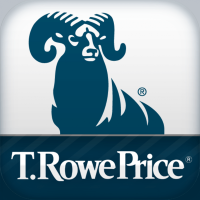BAM

Brookfield Asset Management Ltd.
BAM
(2.8)54,22 USD
30.25% ROA
16.72% ROE
11.11x PER
19.698.672.110,00 USD
6.38% DER
3.1% Yield
33.89% NPM
Brookfield Asset Management Ltd. Stock Analysis
Brookfield Asset Management Ltd. Fundamental Analysis
Fundamental analysis in stock investing is like studying the foundation of a house before buying it. It involves looking at a company's financial health, like its earnings, assets, and debts, to determine if it's a good investment based on its fundamental strength and potential for growth.
| # | Analysis | Rating |
|---|---|---|
| 1 |
ROE
ROE surpassing expectations (29.29%) highlights strong profitability and efficient use of shareholders' equity, making it an appealing investment prospect. |
|
| 2 |
ROA
This stock has a great ability to make a lot of money from the things it owns, which makes it a really good investment for smart investors. |
|
| 3 |
DER
The stock has a low debt to equity ratio (4%), which means it has a small amount of debt compared to the ownership it holds |
|
| 4 |
Revenue Growth
This company's revenue has experienced steady growth over the last five years, indicating a reliable and prosperous financial trajectory. |
|
| 5 |
PBV
The stock's PBV ratio (1.87x) indicates a justifiable valuation, presenting a compelling choice for investors seeking reasonable returns. |
|
| 6 |
Graham Number
The company's Graham number indicates that it is undervalued compared to its stock price, suggesting a potentially favorable investment opportunity. |
|
| 7 |
Buffet Intrinsic Value
Based on Warren Buffett's formula, the company's stock appears undervalued (98), presenting an attractive investment chance with its intrinsic value surpassing the current market price. |
|
| 8 |
Net Profit Growth
The net profit of this company has shown no signs of growth over the last five years, suggesting limited profitability and making it a less attractive investment opportunity. |
|
| 9 |
Assets Growth
Regrettably, this company's revenue has shown no signs of growth over the past three years, suggesting limited potential for returns and making it a less appealing choice. |
|
| 10 |
Dividend Growth
The company's dividend growth has remained flat for the past three years, offering no indication of improved returns and making it a less advantageous investment opportunity. |
|
| 11 |
Dividend
The company's decision to withhold dividends for three years raises questions about its ability to generate consistent returns. |
Brookfield Asset Management Ltd. Technical Analysis
Technical analysis in stock investing is like reading the patterns on a weather map to predict future weather conditions. It involves studying past stock price movements and trading volumes to make predictions about where a stock's price might go next, without necessarily looking at the company's financial health.
| # | Analysis | Recommendation |
|---|---|---|
| 1 | Awesome Oscillator | Buy |
| 2 | MACD | Buy |
| 3 | RSI | Sell |
| 4 | Stoch RSI | Sell |
Brookfield Asset Management Ltd. Price Chart
Financial Statements
Financial statements are like report cards for companies. They show how much money a company makes (income statement), what it owns and owes (balance sheet), and where it spends its money (cash flow statement), helping stock investors understand if a company is healthy and worth investing in.
Income Statements
An income statement for a company is like a scoreboard for its profits and losses. It shows how much money the company made (revenue) and how much it spent to make that money (expenses), helping stock investors see if a company is making a profit or not.
Revenue in stock investing is the total amount of money a company earns from its sales, and it's a key factor that investors consider to assess a company's financial performance and growth potential.
| Year | Revenue | Growth |
|---|---|---|
| 2019 | 2.173.000.000 | |
| 2020 | 2.251.000.000 | 3.47% |
| 2021 | 2.788.000.000 | 19.26% |
| 2022 | 3.627.000.000 | 23.13% |
| 2023 | 3.572.000.000 | -1.54% |
| 2023 | 390.023.766 | -815.84% |
| 2024 | 191.960.400 | -103.18% |
Research and Development Expenses are the costs a company incurs to create and improve its products or services, which can be important for investors to evaluate a company's innovation and potential for future growth.
| Year | Research and Development Expenses | Growth |
|---|---|---|
| 2019 | 0 | |
| 2020 | 0 | 0% |
| 2021 | 0 | 0% |
| 2022 | 0 | 0% |
| 2023 | 0 | 0% |
| 2023 | 0 | 0% |
| 2024 | 0 | 0% |
General and Administrative Expenses are the costs a company incurs to run its day-to-day operations, such as office rent, salaries, and utilities, which investors consider to understand a company's overall efficiency and management effectiveness.
| Year | General and Administrative Expenses | Growth |
|---|---|---|
| 2019 | 92.000.000 | |
| 2020 | 114.000.000 | 19.3% |
| 2021 | 132.000.000 | 13.64% |
| 2022 | 81.000.000 | -62.96% |
| 2023 | 0 | 0% |
| 2023 | 56.000.000 | 100% |
| 2024 | 0 | 0% |
EBITDA stands for Earnings Before Interest, Taxes, Depreciation, and Amortization. It is a measure that helps stock investors analyze a company's profitability by looking at its earnings without considering certain expenses. This helps to get a clearer picture of the company's financial performance and its ability to generate cash flow.
| Year | EBITDA | Growth |
|---|---|---|
| 2019 | 1.363.000.000 | |
| 2020 | 1.371.000.000 | 0.58% |
| 2021 | 2.078.000.000 | 34.02% |
| 2022 | 35.000.000 | -5837.14% |
| 2023 | 2.260.000.000 | 98.45% |
| 2023 | 522.000.000 | -332.95% |
| 2024 | -11.997.508 | 4450.9% |
Gross profit is the money a company makes from selling its products or services after subtracting the cost of producing or providing them, and it is an important measure for investors to understand a company's profitability.
| Year | Gross Profit | Growth |
|---|---|---|
| 2019 | 1.623.000.000 | |
| 2020 | 1.732.000.000 | 6.29% |
| 2021 | 2.085.000.000 | 16.93% |
| 2022 | 2.610.000.000 | 20.11% |
| 2023 | 2.344.000.000 | -11.35% |
| 2023 | 64.023.766 | -3561.14% |
| 2024 | 3.999.176 | -1500.92% |
Net income in stock investing is like the money a company actually gets to keep as profit after paying all its bills, and it's an important measure to understand how well a company is doing financially.
| Year | Net Profit | Growth |
|---|---|---|
| 2019 | 1.913.000.000 | |
| 2020 | 398.000.000 | -380.65% |
| 2021 | 1.869.000.000 | 78.71% |
| 2022 | 19.000.000 | -9736.84% |
| 2023 | 1.976.000.000 | 99.04% |
| 2023 | 451.000.000 | -338.14% |
| 2024 | 495.897.704 | 9.05% |
EPS, or earnings per share, is a measure that shows how much profit a company has earned for each outstanding share of its stock, and it is important for stock investors as it helps understand the profitability of a company and compare it with other companies in the market.
| Year | Earning per Share (EPS) | Growth |
|---|---|---|
| 2019 | 5 | |
| 2020 | 1 | 0% |
| 2021 | 5 | 100% |
| 2022 | 0 | 0% |
| 2023 | 1 | 100% |
| 2023 | 1 | 0% |
| 2024 | 1 | 0% |
Cashflow Statements
Cashflow statements show the movement of money in and out of a company, helping stock investors understand how much money a company makes and spends. By examining cashflow statements, investors can assess if a company is generating enough cash to pay its bills, invest in growth, and provide returns to stockholders.
Free cash flow is the leftover cash that a company generates after covering its operating expenses and capital expenditures, which is important for stock investors as it shows how much money a company has available to invest in growth, pay dividends, or reduce debt.
| Year | Free Cashflow | Growth |
|---|---|---|
| 2019 | 828.000.000 | |
| 2020 | 1.766.000.000 | 53.11% |
| 2021 | 1.408.000.000 | -25.43% |
| 2022 | -387.000.000 | 463.82% |
| 2023 | 490.688.241 | 178.87% |
| 2023 | 523.000.000 | 6.18% |
| 2024 | 118.199.267 | -342.47% |
Operating cash flow represents the cash generated or consumed by a company's day-to-day operations, excluding external investing or financing activities, and is crucial for stock investors as it shows how much cash a company is generating from its core business operations.
| Year | Operating Cashflow | Growth |
|---|---|---|
| 2019 | 829.000.000 | |
| 2020 | 1.786.000.000 | 53.58% |
| 2021 | 1.443.000.000 | -23.77% |
| 2022 | -374.000.000 | 485.83% |
| 2023 | 508.000.000 | 173.62% |
| 2023 | 526.000.000 | 3.42% |
| 2024 | 156.915.286 | -235.21% |
Capex, short for capital expenditures, refers to the money a company spends on acquiring or upgrading tangible assets like buildings, equipment, or technology, which is important for stock investors as it indicates how much a company is investing in its infrastructure to support future growth and profitability.
| Year | Capital Expenditure | Growth |
|---|---|---|
| 2019 | 1.000.000 | |
| 2020 | 20.000.000 | 95% |
| 2021 | 35.000.000 | 42.86% |
| 2022 | 13.000.000 | -169.23% |
| 2023 | 17.311.759 | 24.91% |
| 2023 | 3.000.000 | -477.06% |
| 2024 | 38.716.019 | 92.25% |
Balance Sheet
Balance sheets provide a snapshot of a company's financial health and its assets (such as cash, inventory, and property) and liabilities (like debts and obligations) at a specific point in time. For stock investors, balance sheets help assess the company's overall worth and evaluate its ability to meet financial obligations and support future growth.
Equity refers to the ownership interest or stake that shareholders have in a company, representing their claim on its assets and earnings after all debts and liabilities are paid.
| Year | Equity | Growth |
|---|---|---|
| 2019 | 0 | |
| 2020 | 11.948.000.000 | 100% |
| 2021 | 14.403.000.000 | 17.05% |
| 2022 | 11.417.000.000 | -26.15% |
| 2023 | 2.158.000.000 | -429.05% |
| 2023 | 9.260.423.526 | 76.7% |
| 2024 | 3.259.521.904 | -184.1% |
Assets represent the valuable resources that a company owns, such as cash, inventory, property, and equipment, and understanding a company's assets helps investors assess its value and potential for generating future profits.
| Year | Assets | Growth |
|---|---|---|
| 2019 | 0 | |
| 2020 | 22.471.000.000 | 100% |
| 2021 | 25.643.000.000 | 12.37% |
| 2022 | 12.891.000.000 | -98.92% |
| 2023 | 3.170.000.000 | -306.66% |
| 2023 | 14.216.888.072 | 77.7% |
| 2024 | 4.184.386.248 | -239.76% |
Liabilities refer to the financial obligations or debts that a company owes to creditors or external parties, and understanding a company's liabilities is important for investors as it helps assess the company's financial risk and ability to meet its obligations.
| Year | Liabilities | Growth |
|---|---|---|
| 2019 | 0 | |
| 2020 | 10.523.000.000 | 100% |
| 2021 | 11.240.000.000 | 6.38% |
| 2022 | 3.383.000.000 | -232.25% |
| 2023 | 1.003.000.000 | -237.29% |
| 2023 | 4.965.464.546 | 79.8% |
| 2024 | 924.864.344 | -436.89% |
Brookfield Asset Management Ltd. Financial Ratio (TTM)
Valuation Metrics
- Revenue per Share
- 7.51
- Net Income per Share
- 4.23
- Price to Earning Ratio
- 11.11x
- Price To Sales Ratio
- 8.77x
- POCF Ratio
- 44.64
- PFCF Ratio
- 85.24
- Price to Book Ratio
- 4.35
- EV to Sales
- 8.86
- EV Over EBITDA
- 15.49
- EV to Operating CashFlow
- 63.17
- EV to FreeCashFlow
- 86.09
- Earnings Yield
- 0.09
- FreeCashFlow Yield
- 0.01
- Market Cap
- 19,70 Bil.
- Enterprise Value
- 19,89 Bil.
- Graham Number
- 32.08
- Graham NetNet
- -1.13
Income Statement Metrics
- Net Income per Share
- 4.23
- Income Quality
- -0.75
- ROE
- 0.3
- Return On Assets
- 0.1
- Return On Capital Employed
- 0.23
- Net Income per EBT
- 0.47
- EBT Per Ebit
- 1.26
- Ebit per Revenue
- 0.57
- Effective Tax Rate
- 0.17
Margins
- Sales, General, & Administrative to Revenue
- 0.02
- Research & Developement to Revenue
- 0
- Stock Based Compensation to Revenue
- 0.02
- Gross Profit Margin
- 0.26
- Operating Profit Margin
- 0.57
- Pretax Profit Margin
- 0.72
- Net Profit Margin
- 0.34
Dividends
- Dividend Yield
- 0.03
- Dividend Yield %
- 3.1
- Payout Ratio
- 0.56
- Dividend Per Share
- 1.46
Operating Metrics
- Operating Cashflow per Share
- 1.05
- Free CashFlow per Share
- 0.77
- Capex to Operating CashFlow
- 0.27
- Capex to Revenue
- 0.04
- Capex to Depreciation
- 11.79
- Return on Invested Capital
- 0.28
- Return on Tangible Assets
- 0.3
- Days Sales Outstanding
- 124.98
- Days Payables Outstanding
- 699.02
- Days of Inventory on Hand
- 0
- Receivables Turnover
- 2.92
- Payables Turnover
- 0.52
- Inventory Turnover
- 0
- Capex per Share
- 0.28
Balance Sheet
- Cash per Share
- 0,03
- Book Value per Share
- 10,90
- Tangible Book Value per Share
- 10.9
- Shareholders Equity per Share
- 10.8
- Interest Debt per Share
- 0.69
- Debt to Equity
- 0.06
- Debt to Assets
- 0.05
- Net Debt to EBITDA
- 0.15
- Current Ratio
- 0.84
- Tangible Asset Value
- 3,26 Bil.
- Net Current Asset Value
- -0,15 Bil.
- Invested Capital
- -146000000
- Working Capital
- -0,15 Bil.
- Intangibles to Total Assets
- 0
- Average Receivables
- 0,79 Bil.
- Average Payables
- 0,71 Bil.
- Average Inventory
- 406580444
- Debt to Market Cap
- 0.01
Dividends
Dividends in stock investing are like rewards that companies give to their shareholders. They are a portion of the company's profits distributed to investors, typically in the form of cash payments, as a way for them to share in the company's success.
| Year | Dividends | Growth |
|---|---|---|
| 2023 | 1 | |
| 2024 | 1 | 0% |
Brookfield Asset Management Ltd. Profile
About Brookfield Asset Management Ltd.
Brookfield Asset Management is an alternative asset manager and REIT/Real Estate Investment Manager firm focuses on real estate, renewable power, infrastructure and venture capital and private equity assets. It manages a range of public and private investment products and services for institutional and retail clients. It typically makes investments in sizeable, premier assets across geographies and asset classes. It invests both its own capital as well as capital from other investors. Within private equity and venture capital, it focuses on acquisition, early ventures, control buyouts and financially distressed, buyouts and corporate carve-outs, recapitalizations, convertible, senior and mezzanine financings, operational and capital structure restructuring, strategic re-direction, turnaround, and under-performing midmarket companies. It invests in both public debt and equity markets. It invests in private equity sectors with focus on Business Services include infrastructure, healthcare, road fuel distribution and marketing, construction and real estate; Industrials include manufacturers of automotive batteries, graphite electrodes, returnable plastic packaging, and sanitation management and development; and Residential/ infrastructure services. It targets companies which likely possess underlying real assets, primarily in sectors such as industrial products, building materials, metals, mining, homebuilding, oil and gas, paper and packaging, manufacturing and forest product sectors. It invests globally with focus on North America including Brazil, the United States, Canada; Europe; and Australia; and Asia-Pacific. The firm considers equity investments in the range of $2 million to $500 million. It has a four-year investment period and a 10-year term with two one-year extensions. The firm prefers to take minority stake and majority stake. Brookfield Asset Management Inc. was founded in 1997 and based in Toronto, Canada with additional offices across Northern America; South America; Europe; Middle East and Asia.
- CEO
- Mr. James Bruce Flatt
- Employee
- 2.400
- Address
-
Brookfield Place
Toronto, M5J 2T3
Brookfield Asset Management Ltd. Executives & BODs
| # | Name | Age |
|---|---|---|
| 1 |
Mr. Cyrus Madon CPA, CPA Managing Partner, Executive Chairman of Private Equity & Director |
70 |
| 2 |
Mr. Jason Fooks Managing Director of Investor Relations |
70 |
| 3 |
Mr. Samuel J. B. Pollock CPA Managing Partner, Chief Executive Officer of Infrastructure & Director |
70 |
| 4 |
Mr. Dominic Dodds Managing Director of Technology |
70 |
| 5 |
Mr. Brian William Kingston Managing Partner, Chief Executive Officer of Real Estate & Director |
70 |
| 6 |
Mr. Connor David Teskey President and Chief Executive Officer of Renewable Power & Transition |
70 |
| 7 |
Ms. Lori Anne Pearson F.C.A., FCPA Managing Partner & Chief Operating Officer of Brookfield Corporation |
70 |
| 8 |
Ms. Hadley Peer Marshall Chief Financial Officer & Managing Partner of Infrastructure |
70 |
| 9 |
Mr. Mark Joseph Carney FPC, MPC, PRC Chair of Board & Head of Transition Investing |
70 |
| 10 |
Mr. James Bruce Flatt Chief Executive Officer & Director |
70 |










